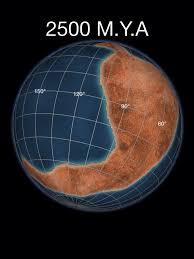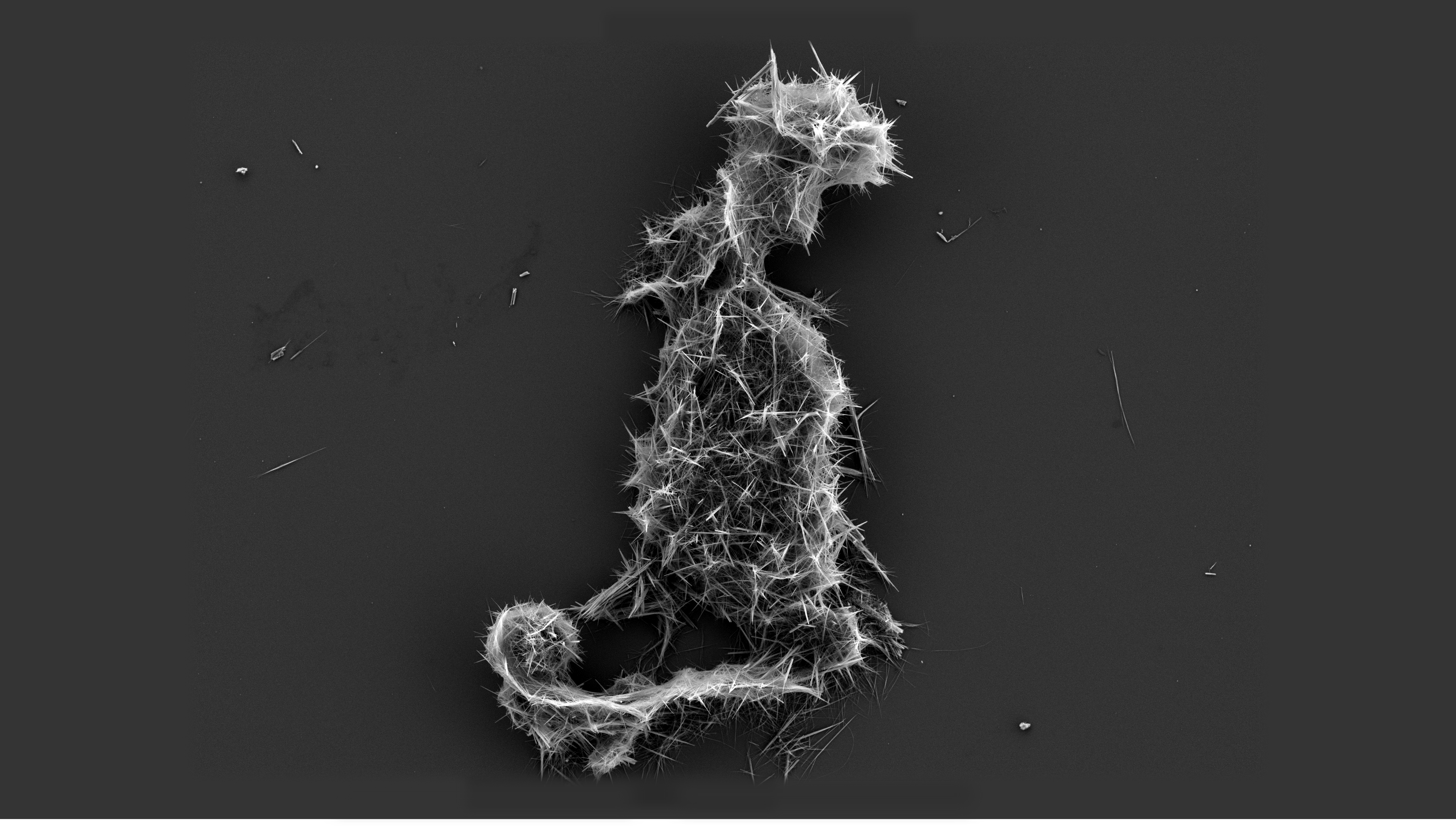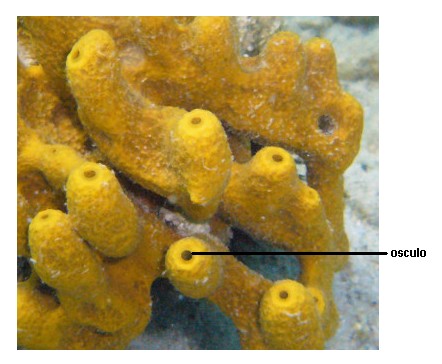|
Otavia
''Otavia antiqua'' is an early sponge-like fossil found in Namibia in the Etosha National Park. It is claimed to be the oldest animal fossil, being found in rock aged between 760 and 550 million years ago. The genus was named after the Geology of Namibia, Otavi Group in Namibia in which the fossils were found. The oldest fossils are from the Tonian period, before the Cryogenian glaciations, but the latest found were from the Nama Group rocks, which are from the Ediacaran period. The shape of the fossils is irregular but rounded. The size varies from a third of a millimetre to . They are hollow inside, and have many small, osculum-like holes connecting the interior to the outside. The material of the outer wall is predominantly calcium phosphate. The affinities of these fossils, along with other paleontological evidence for precambrian sponges, are disputed. References Further reading * * Ediacaran life Cryogenian life Precambrian sponges Prehistoric sponge genera Pre ... [...More Info...] [...Related Items...] OR: [Wikipedia] [Google] [Baidu] |
Tonian
The Tonian (from grc, τόνος, tónos, meaning "stretch") is the first geologic period of the Neoproterozoic era (geology), Era. It lasted from to Mya (million years ago). Instead of being based on stratigraphy, these dates are defined by the International Commission on Stratigraphy, ICS based on radiometric dating, radiometric chronometry. The Tonian is preceded by the Stenian Period of the Mesoproterozoic Era and followed by the Cryogenian. Rifting leading to the breakup of supercontinent Rodinia, which had formed in the mid-Stenian, occurred during this period, starting from 900 to 850 Mya. Biology The first putative metazoan (animal) fossils are dated to the middle to late Tonian ( 890-800 Mya). The fossils of ''Otavia antiqua'', which has been described as a sponge by its discoverers and numerous other scholars, date back to about 800 mya. Even earlier sponge-like fossils have been reported in reefs dating back to 890 million years before the present, but their ident ... [...More Info...] [...Related Items...] OR: [Wikipedia] [Google] [Baidu] |
Nama Group
The Nama Group is a megaregional Vendian to Cambrian group of stratigraphic sequences deposited in the Nama foreland basin in central and southern Namibia. The Nama Basin is a peripheral foreland basin, and the Nama Group was deposited in two early basins, the Zaris and Witputs, to the north, while the South African Vanrhynsdorp Group was deposited in the southern third. The Nama Group is made of fluvial and shallow-water marine sediments, both siliciclastic and carbonate. La Tinta Group in Argentina is considered equivalent to Nama Group. Description The group extends from the Gariep Belt in the south to outcrops of pre- Damara basement in the north.Meert et al., 1997, p.639 Thrombolite-stromatolite reefs in the Nama Group are best developed in the Kuibis Subgroup of the Zaris subbasin, and in the Huns platform of the Witputs subbasin. The Nama Group is a series of interbedded shallow marine carbonates and siliciclastics deposited in a storm-dominated ramp setting.Wood & Cur ... [...More Info...] [...Related Items...] OR: [Wikipedia] [Google] [Baidu] |
Precambrian Africa
The Precambrian (or Pre-Cambrian, sometimes abbreviated pꞒ, or Cryptozoic) is the earliest part of Earth's history, set before the current Phanerozoic Eon. The Precambrian is so named because it preceded the Cambrian, the first period of the Phanerozoic Eon, which is named after Cambria, the Latinised name for Wales, where rocks from this age were first studied. The Precambrian accounts for 88% of the Earth's geologic time. The Precambrian is an informal unit of geologic time, subdivided into three eons (Hadean, Archean, Proterozoic) of the geologic time scale. It spans from the formation of Earth about 4.6 billion years ago ( Ga) to the beginning of the Cambrian Period, about million years ago ( Ma), when hard-shelled creatures first appeared in abundance. Overview Relatively little is known about the Precambrian, despite it making up roughly seven-eighths of the Earth's history, and what is known has largely been discovered from the 1960s onwards. The Precambrian fossil re ... [...More Info...] [...Related Items...] OR: [Wikipedia] [Google] [Baidu] |
Prehistoric Sponge Genera
Prehistory, also known as pre-literary history, is the period of human history between the use of the first stone tools by hominins 3.3 million years ago and the beginning of recorded history with the invention of writing systems. The use of symbols, marks, and images appears very early among humans, but the earliest known writing systems appeared 5000 years ago. It took thousands of years for writing systems to be widely adopted, with writing spreading to almost all cultures by the 19th century. The end of prehistory therefore came at very different times in different places, and the term is less often used in discussing societies where prehistory ended relatively recently. In the early Bronze Age, Sumer in Mesopotamia, the Indus Valley Civilisation, and ancient Egypt were the first civilizations to develop their own scripts and to keep historical records, with their neighbors following. Most other civilizations reached the end of prehistory during the following Iron Age. T ... [...More Info...] [...Related Items...] OR: [Wikipedia] [Google] [Baidu] |
Precambrian Sponges
The Precambrian (or Pre-Cambrian, sometimes abbreviated pꞒ, or Cryptozoic) is the earliest part of Earth's history, set before the current Phanerozoic Eon. The Precambrian is so named because it preceded the Cambrian, the first period of the Phanerozoic Eon, which is named after Cambria, the Latinised name for Wales, where rocks from this age were first studied. The Precambrian accounts for 88% of the Earth's geologic time. The Precambrian is an informal unit of geologic time, subdivided into three eons (Hadean, Archean, Proterozoic) of the geologic time scale. It spans from the formation of Earth about 4.6 billion years ago ( Ga) to the beginning of the Cambrian Period, about million years ago ( Ma), when hard-shelled creatures first appeared in abundance. Overview Relatively little is known about the Precambrian, despite it making up roughly seven-eighths of the Earth's history, and what is known has largely been discovered from the 1960s onwards. The Precambrian fossil re ... [...More Info...] [...Related Items...] OR: [Wikipedia] [Google] [Baidu] |
Cryogenian Life
The Cryogenian (from grc, κρύος, krýos, meaning "cold" and , romanized: , meaning "birth") is a geologic period that lasted from . It forms the second geologic period of the Neoproterozoic Era, preceded by the Tonian Period and followed by the Ediacaran. Cryogenian was the time of drastic biosphere changes. After the previous Boring Billion years of stability, at the beginning of Cryogenian the severe Sturtian glaciation began, freezing the entire Earth in a planetary state known as a Snowball Earth. After 70 million years it ended, but was quickly followed by the Marinoan glaciation, which was also a global event. These events are the subject of much scientific controversy specifically over whether these glaciations covered the entire planet or a band of open sea survived near the equator (termed "slushball Earth"). Ratification The Cryogenian Period was ratified in 1990 by the International Commission on Stratigraphy. In contrast to most other time periods, the beginning ... [...More Info...] [...Related Items...] OR: [Wikipedia] [Google] [Baidu] |
Ediacaran Life
The Ediacaran (; formerly Vendian) biota is a taxonomic period classification that consists of all life forms that were present on Earth during the Ediacaran Period (). These were composed of enigmatic tubular and frond-shaped, mostly sessile, organisms. Trace fossils of these organisms have been found worldwide, and represent the earliest known complex multicellular organisms. The Ediacaran biota may have undergone evolutionary radiation in a proposed event called the Avalon explosion, . This was after the Earth had thawed from the Cryogenian period's extensive glaciation. This biota largely disappeared with the rapid increase in biodiversity known as the Cambrian explosion. Most of the currently existing body plans of animals first appeared in the fossil record of the Cambrian rather than the Ediacaran. For macroorganisms, the Cambrian biota appears to have almost completely replaced the organisms that dominated the Ediacaran fossil record, although relationships are ... [...More Info...] [...Related Items...] OR: [Wikipedia] [Google] [Baidu] |
Calcium Phosphate
The term calcium phosphate refers to a family of materials and minerals containing calcium ions (Ca2+) together with inorganic phosphate anions. Some so-called calcium phosphates contain oxide and hydroxide as well. Calcium phosphates are white solids of nutritious value and are found in many living organisms, e.g., bone mineral and tooth enamel. In milk, it exists in a colloidal form in micelles bound to casein protein with magnesium, zinc, and citrate–collectively referred to as colloidal calcium phosphate (CCP). Various calcium phosphate minerals are used in the production of phosphoric acid and fertilizers. Overuse of certain forms of calcium phosphate can lead to nutrient-containing surface runoff and subsequent adverse effects upon receiving waters such as algal blooms and eutrophication (over-enrichment with nutrients and minerals). Orthophosphates, di- and monohydrogen phosphates These materials contain Ca2+ combined with , , or : * Monocalcium phosphate, E341 (CAS# 775 ... [...More Info...] [...Related Items...] OR: [Wikipedia] [Google] [Baidu] |
Osculum
The osculum (plural "oscula") is an excretory structure in the living sponge, a large opening to the outside through which the current of water exits after passing through the spongocoel. Wastes diffuse into the water and the water is pumped through the osculum carrying away with it the sponge's wastes. Sponges pump large volumes of water: typically a volume of water equal to the sponge's body size is pumped every five seconds. The size of the osculum is regulated by contractile myocytes. Its size, in turn, is one of the factors which determines the amount of water flowing through the sponge Sponges, the members of the phylum Porifera (; meaning 'pore bearer'), are a basal animal clade as a sister of the diploblasts. They are multicellular organisms that have bodies full of pores and channels allowing water to circulate through t .... It can be closed completely in response to excess silt in the water. References Sponge anatomy {{animal-anatomy-stub ... [...More Info...] [...Related Items...] OR: [Wikipedia] [Google] [Baidu] |
South African Journal Of Science
The ''South African Journal of Science'' is an open access, Multidisciplinarity, multidisciplinary academic journal published bimonthly by the Academy of Science of South Africa. The journal has a 2021 impact factor of 2.134. History The journal was established in 1903 as the ''Proceedings of the Annual Meetings of the South African Association for the Advancement of Science''. The annual volume became a monthly publication in August 1947. Abstracting and indexing The journal is abstracted and indexed in: *Scopus *Science Citation Index Expanded *Current Contents/Agriculture, Biology & Environmental Sciences *Current Contents/Life Sciences *The Zoological Record *BIOSIS Previews References External links * * Multidisciplinary academic journals Publications established in 1903 Monthly journals Creative Commons Attribution-licensed journals English-language journals 1903 establishments in the British Empire Academic journals published in South Africa {{journal-stub ... [...More Info...] [...Related Items...] OR: [Wikipedia] [Google] [Baidu] |
Cryogenian
The Cryogenian (from grc, κρύος, krýos, meaning "cold" and , romanized: , meaning "birth") is a geologic period that lasted from . It forms the second geologic period of the Neoproterozoic Era, preceded by the Tonian Period and followed by the Ediacaran. Cryogenian was the time of drastic biosphere changes. After the previous Boring Billion years of stability, at the beginning of Cryogenian the severe Sturtian glaciation began, freezing the entire Earth in a planetary state known as a Snowball Earth. After 70 million years it ended, but was quickly followed by the Marinoan glaciation, which was also a global event. These events are the subject of much scientific controversy specifically over whether these glaciations covered the entire planet or a band of open sea survived near the equator (termed "slushball Earth"). Ratification The Cryogenian Period was ratified in 1990 by the International Commission on Stratigraphy. In contrast to most other time periods, the beginni ... [...More Info...] [...Related Items...] OR: [Wikipedia] [Google] [Baidu] |
Ediacaran
The Ediacaran Period ( ) is a geological period that spans 96 million years from the end of the Cryogenian Period 635 million years ago (Mya), to the beginning of the Cambrian Period 538.8 Mya. It marks the end of the Proterozoic Eon, and the beginning of the Phanerozoic Eon. It is named after the Ediacara Hills of South Australia. The Ediacaran Period's status as an official geological period was ratified in 2004 by the International Union of Geological Sciences (IUGS), making it the first new geological period declared in 120 years. Although the period takes its name from the Ediacara Hills where geologist Reg Sprigg first discovered fossils of the eponymous Ediacaran biota in 1946, the type section is located in the bed of the Enorama Creek within Brachina Gorge in the Flinders Ranges of South Australia, at . The Ediacaran marks the first appearance of widespread multicellular fauna following the end of Snowball Earth glaciation events, the so-called Ediacaran biota, ... [...More Info...] [...Related Items...] OR: [Wikipedia] [Google] [Baidu] |








